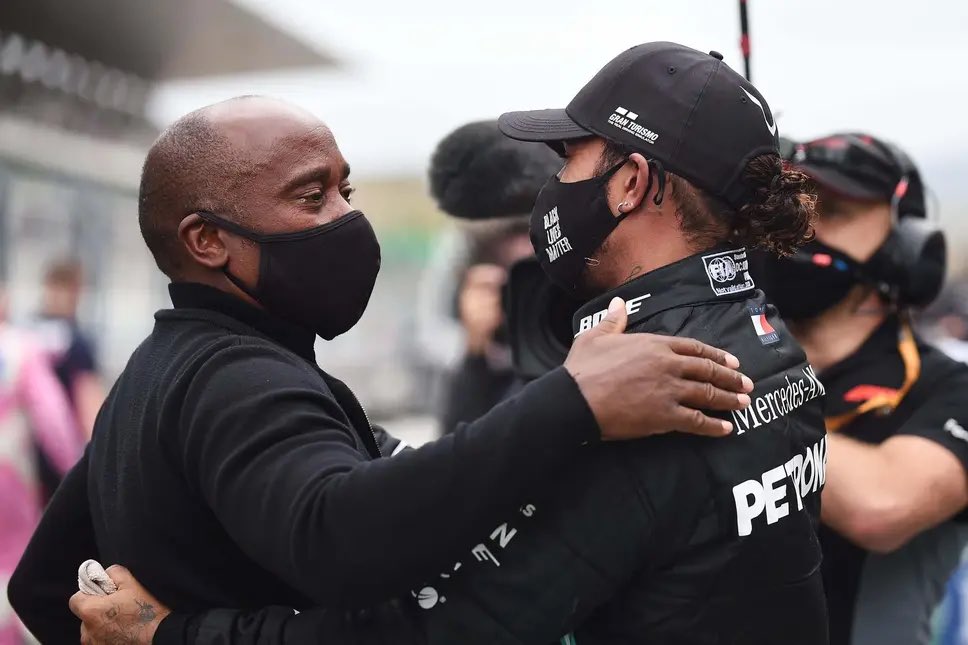
#F1: Mark Hughes takes a look at next week’s Mexican Grand Prix and the chances of it being a Red Bull favoured track ‘again’. 👇🏽
Mexico is just under 2,200 metres above sea level, easily the highest altitude of any circuit on the calendar, that means the air is less dense by around 25% (less oxygen) than at sea level and it always has a profound effect on the performance of the cars.
The traits of the RB16B and W12 are very different, both in terms of power unit and aerodynamics. The unique conditions of the Mexican circuit are likely to reward or punish them each differently.
POWER UNIT:
Mercedes are invariably at a power disadvantage in Mexico in spite of what has been by far the dominant power unit of the hybrid era.
With 25% less oxygen content, the air is naturally less combustible. But in theory a turbocharger compensates for this by spinning
Mercedes are invariably at a power disadvantage in Mexico in spite of what has been by far the dominant power unit of the hybrid era.
With 25% less oxygen content, the air is naturally less combustible. But in theory a turbocharger compensates for this by spinning
faster – as it meets less resistance – and thereby compresses the air more. The air compressed by the turbo should therefore have much the same oxygen content as normal.
However, the F1 turbo shaft speeds are limited by regulation to a maximum of 125,000rpm and in lower altitudes they tend not to run as fast as that, but that limit is the ceiling for the turbo’s ability to compensate for the thinner air.
Because the ERS-H (energy recovery system) can electrically spin up the turbo to negate lag, the single turbos prescribed in the regulations tend to be as big as can be justified by the energy efficiencies in the system.
But the bigger the turbo, – in which case, Mercedes’ turbo is bigger than that of Red Bull’s – the more heat is generated for a given speed.
The thinner air in Mexico gives an appropriately lesser cooling effect and so as the Mercedes turbo spins up trying to compensate for the
The thinner air in Mexico gives an appropriately lesser cooling effect and so as the Mercedes turbo spins up trying to compensate for the
air’s lower oxygen content it tends to suffer a greater temperature increases than those of rival power units and if it runs too hot it will not meet its boost targets.
So traditionally, Mercedes have been at a power disadvantage here. Historically Red Bull, whether Renault or
So traditionally, Mercedes have been at a power disadvantage here. Historically Red Bull, whether Renault or
Honda-powered, has been much more competitive on power here than at any other venues during the season.
DOWNFORCE & DRAG:
The thinner air means there is less of a pressure differential between the ambient and the air passing over the wings and the car’s underfloor. So all the cars generate less downforce at Mexico – a lot less.
The thinner air means there is less of a pressure differential between the ambient and the air passing over the wings and the car’s underfloor. So all the cars generate less downforce at Mexico – a lot less.
Even with full Monaco-style wing levels they have less downforce than at Monza where they run the skinniest wings of the season.
The RB16B, with its higher-rake design, is recognised as having a higher downforce ceiling than the lower-rake W12.
The RB16B, with its higher-rake design, is recognised as having a higher downforce ceiling than the lower-rake W12.
With less difference than usual in downforce levels between the two cars, it might be assumed this would help Mercedes. But, the drag is also reduced a lot by the thinner air so the downforce/drag efficiency trade-off is at a completely different place to “usual”.
There is less drag penalty than usual in loading the car up with as much downforce as possible, thereby helping any car which usually has a less efficient trade-off. That car would be the Red Bull, with a high-rake aero concept that is intrinsically less aerodynamically efficient
in this trade-off. That matters less in Mexico than at most other venues.
TYRES & BRAKES:
Because the thin air has less cooling power, there is a big challenge in keeping the tyres and, in particular, the brakes at their optimum temperatures.
Because the thin air has less cooling power, there is a big challenge in keeping the tyres and, in particular, the brakes at their optimum temperatures.
Historically, Mercedes are more marginal with brake cooling than other cars, relying on the drivers to manage the temperatures so that the front brake ducts can be optimised for ultimate aerodynamic performance.
Comparing the Red Bull’s much simpler brake ducts with those of the Mercedes suggests they have a greater cooling capacity.
The Red Bull usually runs with its enclosing aero ‘cake tin’ drum shroud partially open, unlike the Mercedes.


The Red Bull usually runs with its enclosing aero ‘cake tin’ drum shroud partially open, unlike the Mercedes.



This can be changed in Mexico.
Although there are always unforeseen complicating factors in determining which of the two title-contesting cars performs better than the other at any given venue, Red Bull’s confidence and Mercedes’ caution coming into the Mexican weekend is very evident.
via Formula1.com
** It must be mentioned though that this is a mere technical analysis from one person and others (such as Craig Scarborough) have done their own ‘analysis’ and had different results/assumptions.
• • •
Missing some Tweet in this thread? You can try to
force a refresh






